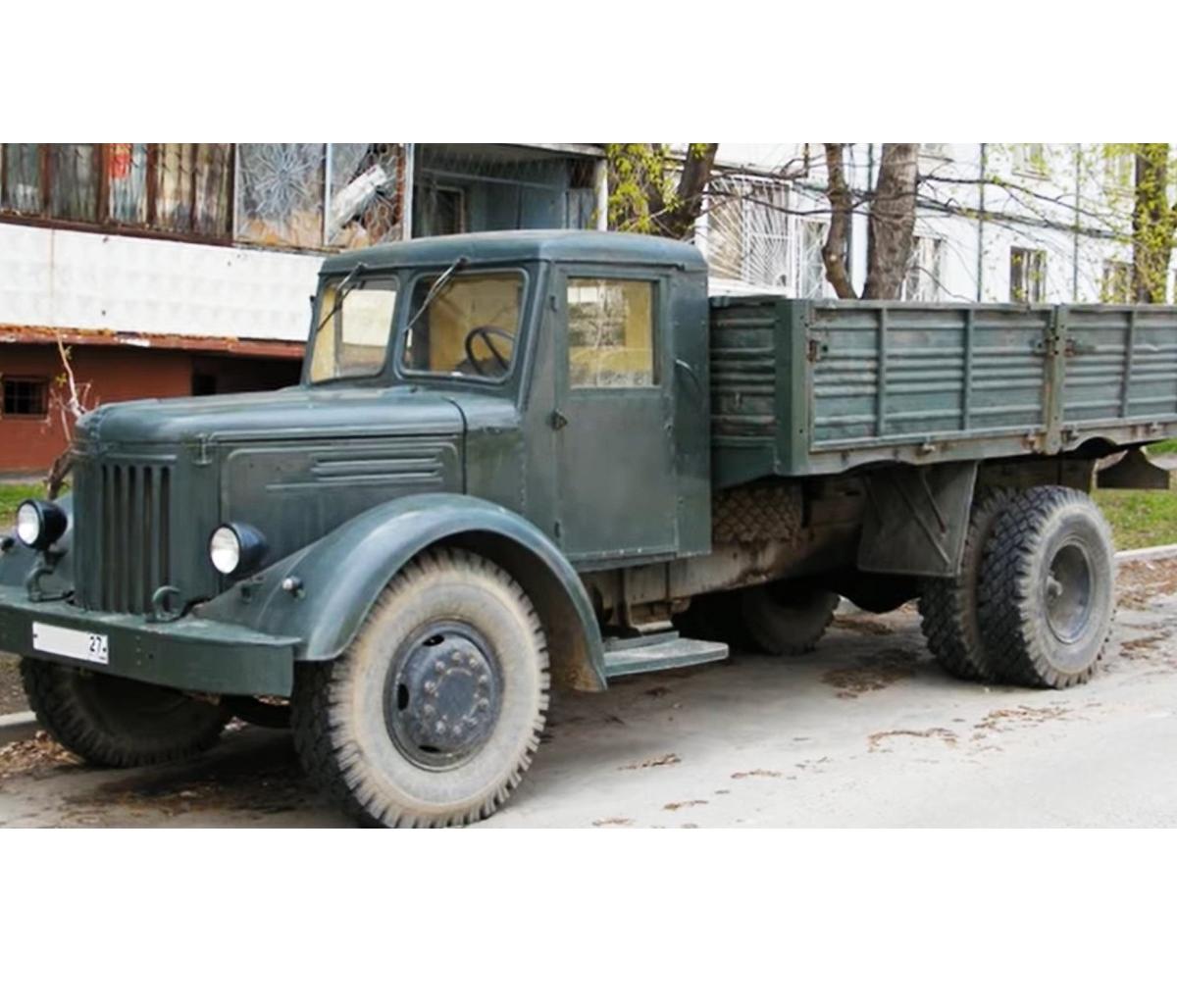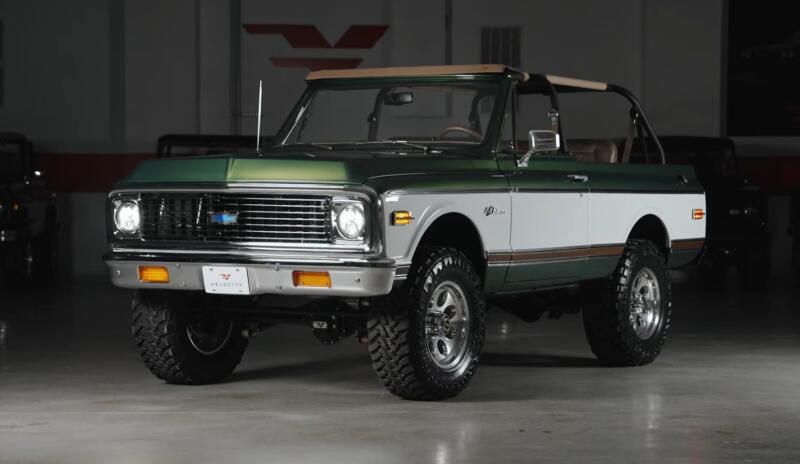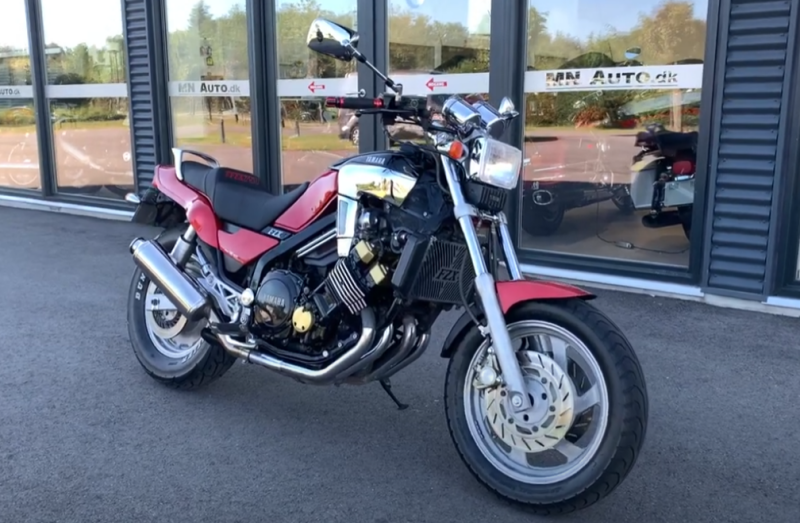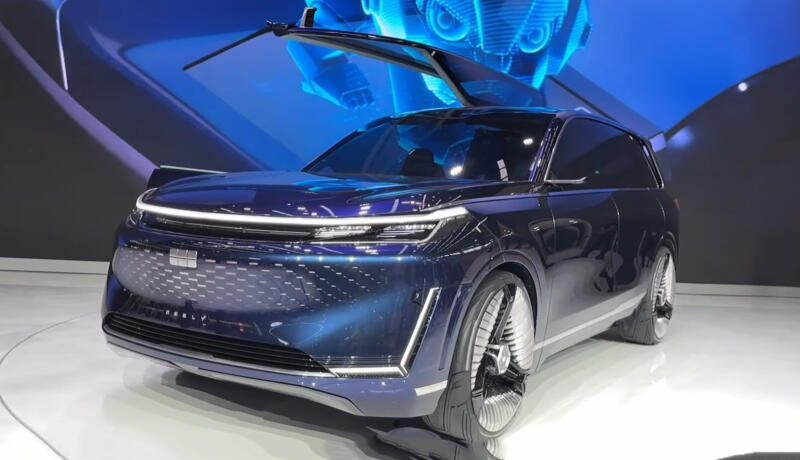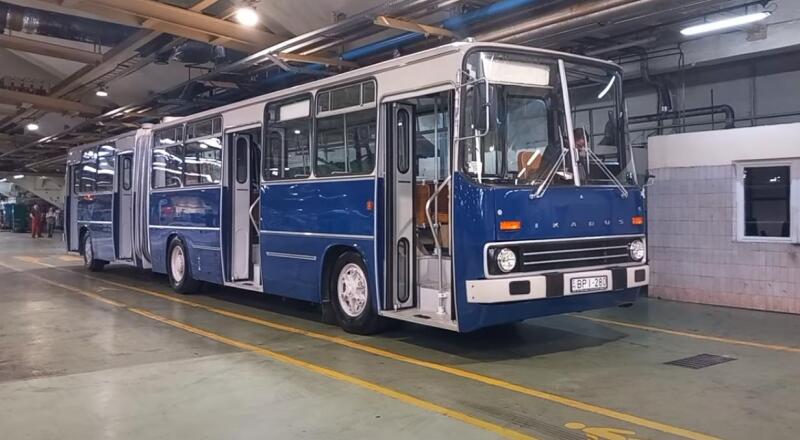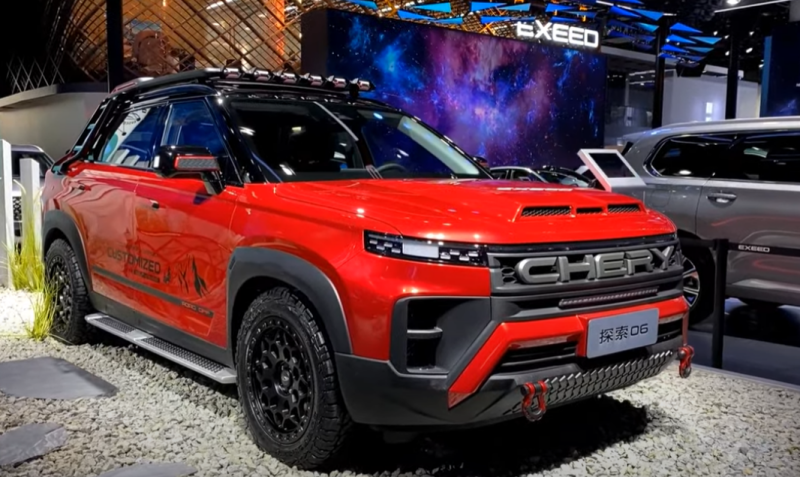The height of the Great Patriotic War. Both the army and the rear are in dire need of a truck with high traction power and capable of solving the problems of an increased volume of cargo transportation. The creation of such a sample was entrusted to an enterprise located in the rear - the Yaroslavl Automobile Plant. The times were very difficult, therefore, despite a clear order "from above", the OP-200 prototype was made only by the time the Soviet army reached the borders of our homeland - in the middle of 1944.
 This is what the export samples looked like. Photo: youtube.com
This is what the export samples looked like. Photo: youtube.comPerhaps the deadlines would have been tightened even more, and the prototype would have appeared after the victory. But People's Commissar Akopov visited the plant and recommended speeding up the process as much as possible. Of course, the Soviet automakers did not even think of sabotaging the project, it was just that wartime did not allow working at full capacity. For example, tinsmiths, due to a lack of materials, could not produce stamping, and milling workers had to cut the axles and plumage of the truck directly on the machines. There were also some positive aspects: Lend-lease documentation helped designers find optimal solutions faster and saved their time.
YaAZ-200, turned into MAZ-200
As is often the case in our lives, sweat, sleepless nights, and blisters are all one. But laurels and honor are reaped by completely different people. The same thing happened with this model. Even the name under which it went down in history was different from the original.
During the tests, the dynamic qualities of a multi-ton truck were at their best. He also showed excellent handling. The result was a state order for YaAZ for the annual production of 25 trucks and 40 serial engines and components for them. This decision coincided with the transfer of the 205th model from Yaroslavl to the facilities of the Minsk Automobile Plant.
 Strict dashboard. Photo: youtube.com
Strict dashboard. Photo: youtube.comSubsequent events showed that the post-war conditions and capacities of the Yaroslavl plant would not allow fulfilling the state order in full. 5 post-war years allowed to produce only 50-70% of the planned amount. In the early 50s, it became clear that YaAZ would not be able to reach the expected production levels at all. Therefore, in 1951, the release of a new model was entrusted to Minsk colleagues.
So all the laurels of Yaroslavl developments went to Belarusian specialists, and the car itself was renamed MAZ-200. Until production was fully expanded, during the year, YaMZ also continued to produce trucks of the 200th model.
The capacities of the Belarusian plant allowed us to hope that the national economy would receive heavy vehicles so necessary for its restoration in full. The only noticeable difference in the Minsk version of this model was the radiator grille: it turned from horizontal to vertical.
Advanced design and… wooden cabin
As mentioned earlier, the creators of the MAZ-200 were inspired by the designs of American trucks of that time. For example, the engine of the new model was almost an exact copy of the American GMC, but the outlines of the cabin were too reminiscent of the pre-war MACK L. Only now the material for its manufacture was chosen, indeed, in Russian.
The shortage in the post-war country of steel sheets for the manufacture of car cabins led to an unusual solution. The cabin was made of dense wood, upholstered with thin sheets of iron. This approach turned out to be very popular. It was also used in the creation of cars for electric trains SR3 and some other vehicles of the Soviet period. There were other advantages of the model:
✅ Mersedes L4500 sample wheels
✅ synchromesh forward gears
✅ tachometer
✅ pump nozzles
There were also "features" in it. One of them can be considered a very cold cabin. The drivers of those times, who went through the war, easily solved such a problem. When operating in cold weather, they simply pierced the wood paneling in the area of \uXNUMXb\uXNUMXbthe engine compartment. So the heat of the engine penetrated inside and warmed the one who drove the truck.
 It was winter operation that was the most problematic for the driver. Photo: youtube.com
It was winter operation that was the most problematic for the driver. Photo: youtube.comThe use of advanced overseas technologies raised the quality indicators of the MAZ-200 to a higher level than some of its European counterparts of that time. Therefore, it is not surprising that Minsk trucks were also exported to other countries. It is very easy to distinguish such instances by the cabin, painted in blue. For the domestic market of the state, which had not yet departed from the horrors of the war, khaki trucks were produced. Interestingly, after the production of heavy trucks was transferred from Yaroslavl to Minsk, the bison replaced the bear on the emblem. It was the latter that became the personification of the line of powerful Belarusian cars.
Modifications of the popular model
The invariably accompanying success and popularity of the car brought it to the blue screens of the country. In addition to filming in the "Rumyantsev Case", the legendary truck also appeared in "Beware of the car!". In the film, a truck crane made on its chassis appears, helping to steal the 21st Volga from a closed garage. The episodic appearance of the MAZ-200 also happened in some other films of those times.
 Many special vehicles were produced on the MAZ-200 chassis. Photo: youtube.com
Many special vehicles were produced on the MAZ-200 chassis. Photo: youtube.comAnd reliability and good technical performance prompted designers to create modifications on the chassis of the same name used for special purposes. Almost in parallel, a version of the 4x2 formula truck was made for the needs of the Soviet army. He received a tent body and folding benches in it for transporting military personnel.
The following year, a more powerful, 135-horsepower MAZ-200V appeared. This truck tractor was specially equipped with a more powerful YaAZ-204V engine (the original had 110/120 hp) in order to tow multi-ton semi-trailers, also manufactured by the Minsk plant. In general, an unthinkable variety of body types was used on the basis of a classic truck:
✅ refrigerators
✅ milk trucks
✅ fire equipment for various purposes
✅ tank trucks
✅ cranes
✅ street irrigation equipment
Over time, special timber trucks MAZ-501 and dump trucks MAZ-205 were created. It was the latest model that became the most popular in this series. Its circulation reached almost 100 thousand copies, which significantly exceeded the number of all other modifications produced.
End of production and preparation of a new model
1962 was a landmark year for the founder of the model, which by that time had become the Yaroslavl Motor Plant. Then the YaMZ-236 was born, an engine whose modifications are still used six decades later! It was not only more powerful (165 hp), but also much more economical than its predecessor.
 Truck in fire coloring. Photo: youtube.com
Truck in fire coloring. Photo: youtube.comThe release of the MAZ-200 continued until the very last day of 1965. The total circulation of the issue was 230 thousand copies. After that, he was replaced by the "five hundredth". But the history of the successful truck did not end there. For a whole decade at many enterprises, he was the main truck. It was used in places in the 80s. Surprisingly, even in our time, such a truck is used as a chassis for a generator by the emergency service of the Rostelecom company in Nizhny Novgorod.
